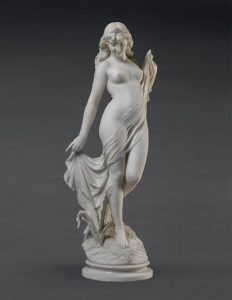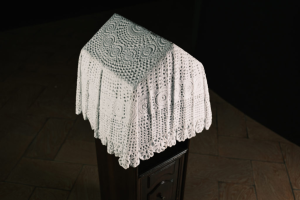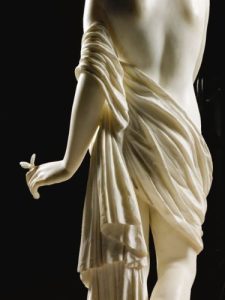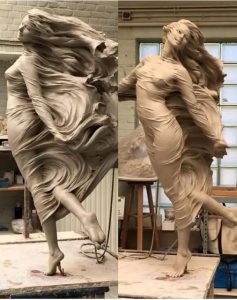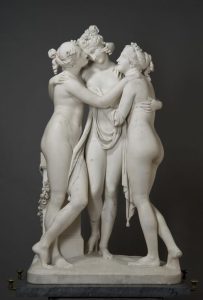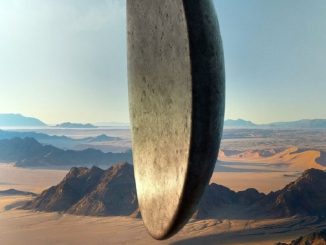Raffaello Monti, an Italian sculptor active during the 19th century, is celebrated for his ability to capture both the beauty and intricacy of drapery in marble. His works, characterized by an exquisite attention to detail and a unique aesthetic of translucency, often leave observers mesmerized. Among his oeuvre, pieces like the sculpture shown in the image are often attributed to him, showcasing his distinctive style and technical mastery.
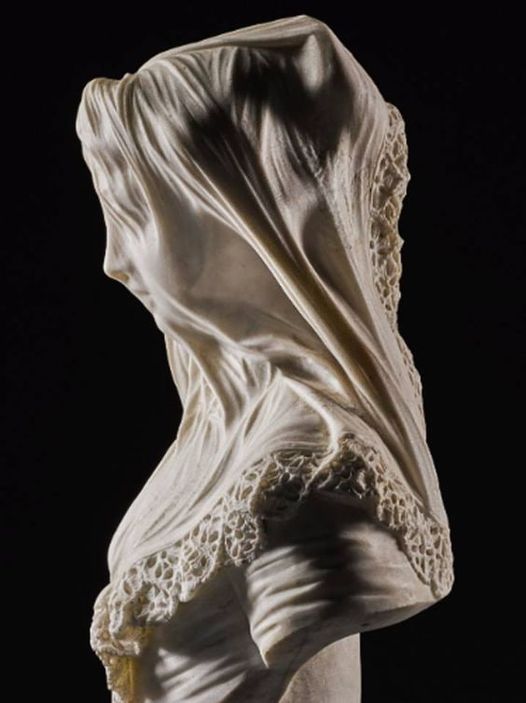
Born in 1818 in Milan, Monti was a product of a vibrant period in European art that saw a resurgence of interest in classical themes, combined with a romantic flourish that emphasized emotion and texture. Monti’s training at the Accademia di Brera in Milan honed his skills in sculpture and design, preparing him to become a part of the Italian artistic landscape, which was heavily influenced by the neoclassical style.
The sculpture pictured, often attributed to Monti, exemplifies his fascination with veiled figures, a theme that recurs throughout his career. This particular piece captures a figure shrouded in a thin veil that clings to the contours of her form, suggesting both the figure’s shape and the delicate texture of the material covering it. The ability to render marble so that it resembles lightweight fabric thin enough to see facial features through is nothing short of remarkable, demonstrating Monti’s virtuosity.
Monti’s technique involves painstakingly detailed work to create the illusion of softness and fluidity in a medium as hard as marble. The veiled effect not only adds a layer of mystery and modesty to the figure but also invites viewers to ponder the unseen. This artistic choice can be interpreted as a metaphor for the era’s social constraints or as a deeper, symbolic representation of the human condition, veiled in both reality and metaphor.

The drapery is rendered with such precision that it appears nearly translucent, a testament to Monti’s skill in using light and shadow to define form. The lacework at the edge of the veil adds a further texture contrast, enhancing the overall realism of the piece. Such sculptures were highly popular during his time, celebrated for their elegance and the technical challenges they overcame.
Monti’s work was well-received not only in Italy but also abroad. His sculptures became part of prestigious collections and were exhibited in major European cities, capturing the admiration of both contemporaries and critics. The allure of his veiled sculptures continues to hold a significant place in art historical discussions, appreciated for their beauty and the emotional depth they convey.
Today, pieces attributed to Raffaello Monti continue to draw attention from art historians and enthusiasts alike. They are studied for their technical excellence and emotional impact, serving as prime examples of 19th-century Italian sculpture that successfully bridges the classical and the modern. As viewers encounter Monti’s work, they are invited to not only admire the technical prowess displayed but also to engage with the rich layers of meaning each piece offers.
